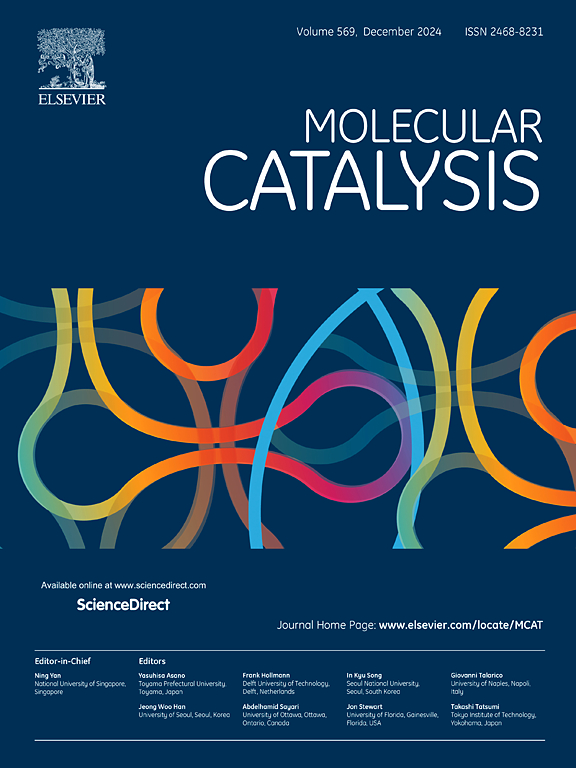Theoretical insights of nitrate reduction to ammonia on partially reduced In2O3 surfaces
IF 3.9
2区 化学
Q2 CHEMISTRY, PHYSICAL
引用次数: 0
Abstract
The electrocatalytic nitrate reduction reaction (NO3RR) has attracted much attention due to the formation of value-added ammonia as well as being an environmentally benign process. However, there is still a lack of high-performance electrocatalysts and an in-depth understanding of the electrocatalytic reaction mechanism for NO3RR. Based on first-principles calculations, the partially reduced In2O3-x catalysts with different monolayers (MLs) of oxygen vacancies were examined for the electrochemical conversion of nitrate to ammonia. The thermodynamically favourable pathways were identified for the screened candidates with various MLs of oxygen vacancies from 0 to 3, and the Gibbs free energy evolution of the 2 MLs of oxygen vacancies was downhill. The catalysts’ performance is highly associated with the oxygen vacancy layers, and In2O3 with 2 ML of oxygen vacancies exhibits the highest NO3RR activity. The introduction of oxygen vacancies can enhance the interfacial charge density around In active sites. The PDOS comparison between 0 ML and 2 MLs unravelled that the oxygen vacancies can downshift the overall orbitals and make the defective In2O3 metallic, thus promoting the electron transfer for improved performance of NO3RR. Meanwhile, the competing hydrogen evolution reaction (HER) is effectively inhibited. This work not only proposes a high-performance electrocatalyst for ammonia production but also reveals the relationship between the layer number of oxygen vacancies and the NO3RR activity, thus highlighting vacancy engineering and providing novel insights into the design of NO3RR catalysts.

求助全文
约1分钟内获得全文
求助全文
来源期刊

Molecular Catalysis
Chemical Engineering-Process Chemistry and Technology
CiteScore
6.90
自引率
10.90%
发文量
700
审稿时长
40 days
期刊介绍:
Molecular Catalysis publishes full papers that are original, rigorous, and scholarly contributions examining the molecular and atomic aspects of catalytic activation and reaction mechanisms. The fields covered are:
Heterogeneous catalysis including immobilized molecular catalysts
Homogeneous catalysis including organocatalysis, organometallic catalysis and biocatalysis
Photo- and electrochemistry
Theoretical aspects of catalysis analyzed by computational methods
 求助内容:
求助内容: 应助结果提醒方式:
应助结果提醒方式:


